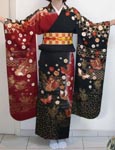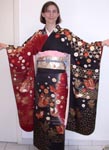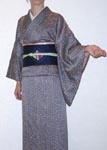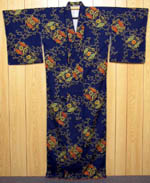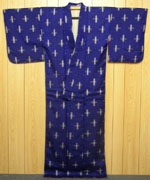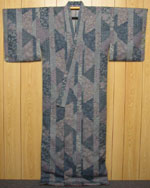Yukata kitsuke videos
January 22nd, 2004 by AnnaThe excellent kitsuke site at Somesho has added videos on how to wear yukata and tie different hanhaba obi musubi! You’ll need a very fast connection to download them, as they’re big files (the kitsuke videos range from 3 to 19 meg, while the obi musubi are from 25-40 meg). If you plan on viewing them more than once, do save the videos to your hard drive, as this will save you a long wait and spare Somesho bandwidth costs, which can be very expensive. To save a video to your computer, just right-click on the link and select “Save Link Target As…” or “Save Target As…” depending on your browser.
These videos are great for seeing the actual movements that go into putting on kimono, as the basics don’t change too much from yukata to silk kimono.
Here’s a translation of the titles, with my own explanation in parentheses:
How to put on a yukata
1. Fastening the waistband (first koshihimo at the waist, but they use an elastic band)
2. Attaching the sash (datejime, though here they use an odd type of datejime with incorporated kohlin belt that I haven’t yet seen for sale on the web)
3. Attaching the mae ita (also known as “obi ita”. Again, one with elastic attached.)
How to tie hanhaba obi
1. Choucho musubi (butterfly musubi, resembles a bow tie)
2. Obunko (bunko musubi, the one most seen on yukata. Note that it’s different from a bunko musubi tied with a fukuro obi. Also, you don’t have to fold up the front diagonally to show the opposite side, but it can be a fun variation to do.)
3. Kai no kuchi
4. “Ribbon” musubi (a trickier musubi to tie, but very pretty)
5. Aoi (the most challenging of the five)
You may notice that the same two base folds are used for most: tying the short or long end around the other. This is also true for obi musubi done with Nagoya and fukuro obi, so practicing these will help quite a bit.
Note: Somesho also has a page called Somesho Internet Project with an English version (which that link points to). You can find more videos there, plus links to accompanying photo directions where available.
